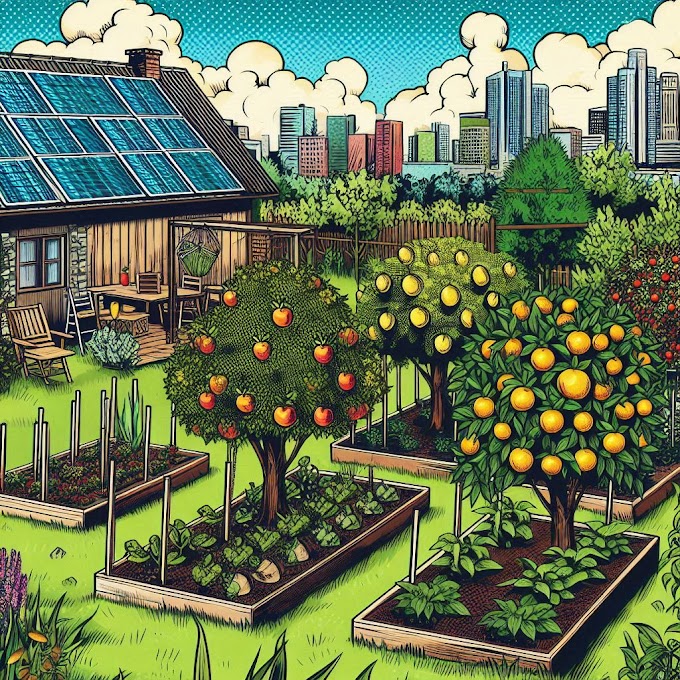Sweet Potatoes: A Survival Garden Superfood
Sweet potatoes are a must-have in any survival garden. They’re incredibly versatile, easy to grow, and highly nutritious. With a long storage life and the ability to thrive in various climates, sweet potatoes are a survival gardening treasure.
Why Grow Sweet Potatoes?
Nutritional Value: Sweet potatoes are rich in vitamins A, C, and B6, along with potassium and fiber. They provide sustained energy and are an excellent food source during tough times.
Dual Harvest: Both the roots and the nutrient-packed leaves are edible, making them doubly valuable.
Low Maintenance: Sweet potatoes are drought-tolerant and grow well in poor soils, making them ideal for survival situations.
When to Plant Sweet Potatoes
Timing: Plant sweet potatoes in late spring to early summer, once the soil temperature consistently reaches 65°F (18°C).
Growing Season: Sweet potatoes need a warm growing season of 90-120 days to mature.
Where to Grow Sweet Potatoes
Location: Choose a sunny location with at least 6-8 hours of sunlight daily.
Soil: Sweet potatoes thrive in loose, well-drained soil with a pH of 5.5-6.5. Sandy or loamy soils are ideal, as compacted soil can hinder root development.
How to Grow Sweet Potatoes
1. Start with Slips:
Sweet potatoes are grown from "slips," which are shoots sprouted from mature sweet potatoes. You can buy slips or grow your own by placing a sweet potato in water or damp soil.
2. Planting:
Plant slips 12-18 inches apart in rows spaced 3 feet apart. Bury the bottom half of each slip in the soil, ensuring the leaves are above ground.
3. Watering: Water thoroughly after planting and keep the soil consistently moist during the first few weeks. Once established, sweet potatoes are drought-tolerant and require less frequent watering.
Benefits of Sweet Potatoes in a Survival Garden
High Yield: A small space can yield a large crop of roots and greens.
Nutritional Powerhouse: Sweet potatoes are a calorie-dense, nutrient-rich food that can sustain you during emergencies.
Versatility: They can be used in a wide variety of recipes, from savory dishes to desserts.
Culinary Uses
Roots:
Boil, roast, or mash sweet potatoes as a side dish or use them in soups, casseroles, or pies.
Slice into chips or fries and bake for a healthier snack.
Leaves:
Sauté sweet potato greens with garlic and oil, or add them to stir-fries, soups, and salads for a nutritious boost.
Growing Tips
Mulch: Mulching helps retain soil moisture, control weeds, and keep the roots warm.
Rotate Crops: Avoid planting sweet potatoes in the same spot every year to reduce pest and disease issues.
Monitor Pests: Watch for pests like sweet potato weevils and root-knot nematodes. Use crop rotation and companion planting to deter them.
Harvest at the Right Time: Sweet potatoes are ready to harvest when the leaves start to yellow and die back.
Harvesting and Storage
1. Harvesting: Carefully dig up sweet potatoes with a spade or fork to avoid bruising or cutting the roots.
2. Curing: Cure sweet potatoes in a warm, humid location (85°F and 85% humidity) for 7-10 days. This process enhances sweetness and extends shelf life.
3. Storage: Store cured sweet potatoes in a cool, dark, and well-ventilated place. Properly stored, they can last up to 6 months.
Why Sweet Potatoes Are Essential in Survival Gardens
Sweet potatoes are a survival garden standout for their nutritional value, dual harvest potential, and resilience. Whether you're seeking sustenance during hard times or a reliable crop that requires minimal maintenance, sweet potatoes provide a versatile, long-lasting food source that’s as delicious as it is dependable.












